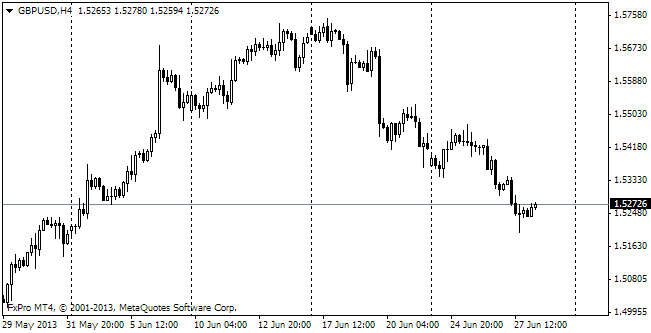EUR/usd
Yesterday we said that it was high time for the markets to start correcting. However, yesterday's move can hardly be called a correction in the full sense of the word, as the single currency failed even to go above the intraday low of Wednesday and the daily high was almost the same as a day before. So, now we can speak rather about the end of growth. At such moments the most cautious traders take their profits, but the majority of traders haven't joined the movement yet. It can be easily understood, as the most important event of these days – the Fed's decision – will be rendered only next week. The outcome of the fomc's decision is still haloed by uncertainty. Moreover, after the release of payrolls this uncertainty has become even more intense. There's a clear discrepancy between the employment statistics based on payrolls and the data received from the labour department, which tracks unemployment claims. If the former point at a very modest improvement in the labour market, which don't even cover natural population increase, the latter shows the best rates over the last 7 years. Last week the number of unemployment claims fell down to 292K, which is the lowest rate since 2006. The number of continuing claims proved to be less than 3 million, which is also a multi-year low. To some extent, such rates are connected with one-off factors, but on the other hand, we can't disregard the downtrend. This difference between payrolls and claims can be attributed to the disappointment after numerous attempts to find a job. The number of people on food stamps in the USA reaches all-time maximums, however growth of home prices is at two-figure rates, which makes the gap between the rich and the poor even wider. It is a big mystery how the Fed regards the situation, but we still believe that now it is too early for the stimulus rollback to start, as it will entail increase in mortgage interest rates and will make companies more cautious in hiring new workers.

GBP/USD
The sterling is going on the defensive. No, it didn't fall very low and even hit a fresh local high yesterday at 1.5840, but since then it's been under pressure, having dipped below 1.5800. Also, the sterling is depreciating against other currencies, having moved off the local extremums against the euro, franc and yen. The peaceful sliding of the British currency today can be broken only by the release of US retail sales stats.

USD/JPY
Yesterday usdjpy closed the gap, formed at the beginning of the week, which is fair and expected. But now players don't have any particular idea regarding the further movement of the yen, so the pair is drifting between 99 and 100, going out of the channel for a while. In our opinion, such behaviour is quite justified. Against last year's levels, growth makes over 20%, so we don't expect any significant shifts in the coming days.

AUD/USD
The aussie, pushed down by a figure on disappointing employment stats, remains at 0.9250. The bulls are discouraged, but the bears don't have any reason to sell, as the probability of the rate cut in the coming months has seriously declined. Perhaps, the best thing to do with the currency now is to look at it from a distance or to risk and play inside the narrow range.
